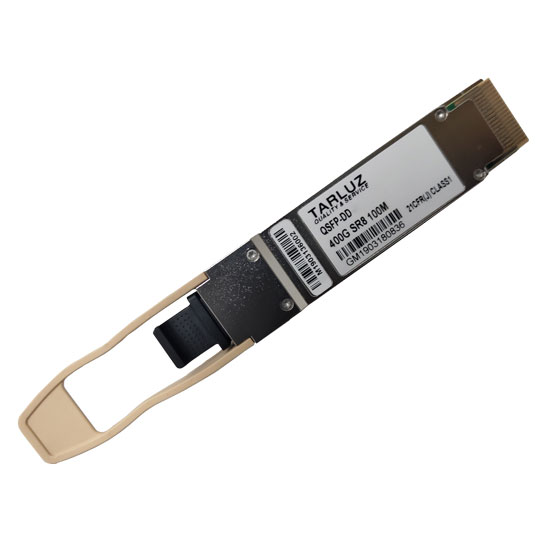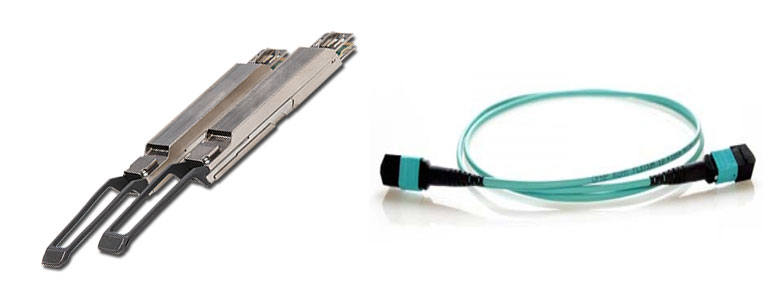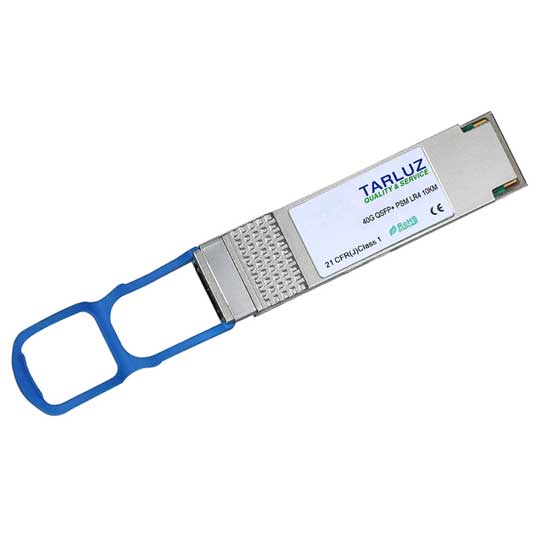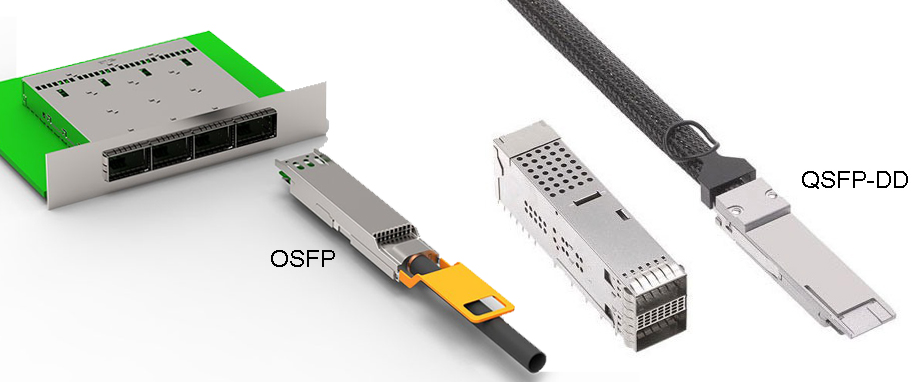Q: HOW IS QSFP-DD800 DIFFERENT THAN QSFP-DD?
A: The QSFP-DD800 MSA is focused on the next generation of the QSFP family of modules. It will focus on increasing the aggregate module bandwidth and increasing individual line speeds to 112 Gb/s. In addition, changes are anticipated to the specification in the areas of thermal performance up to 24 watts, and more detailed EMI improvements.
Q: IS QSFP-DD800 BACKWARD COMPATIBLE TO QSFP-DD AND QSFP?
A: Yes, it is anticipated that changes to the QSFP-DD800 connector /cages will not have any effect on backward compatibility to accept legacy QSFP-DD or QSFP modules and that QSFP-DD800 DACs will operate correctly at the lower speeds in QSFP-DD hosts.
Q: WHAT ARE THE KEY FEATURES OF QSFP-DD800?
A: A successful form factor must support the entire set of media and transceiver types prevalent in the networking industry. For media this includes passive direct attached copper cables (DAC), multi-mode fibers (MMF) and single-mode fibers (SMF). For transceivers and active copper or active optical cable assemblies, this includes those defined by Ethernet, Fibre Channel, and InfiniBand for 40 Gbps, 100 Gbps, 200 Gbps, and 400 Gbps. In addition, port density must not be compromised from that of current practice. Further, backward compatibility with the popular QSFP and QSFP-DD form factor is essential for industry adoption.
Q: WHAT WILL THE QSFP-DD800 SPECIFICATION DEFINE?
A: It is anticipated the QSFP-DD800 Specification will define a pluggable form factor that supports 8 high speed electrical interfaces connecting to the host. This will include specifications for a mechanical module, a single height 1×1 surface mount cage, a 2×1 cage with a hybrid BiPass/Flyover connector and a 2×1 cage with integrated connector. The specifications include thermal, pinout and management aspects. The QSFP-DD800 can support both optical and copper interfaces, but those physical layer specifications will be defined outside of the MSA specification as is usual for form factor MSA specifications.
Q: WHAT WILL THE QSFP-DD800 CONNECTOR / CAGE VARIANTS LOOK LIKE?
A: Due to industry need, most pluggable form factors eventually get developed as a two-high stacked cage-connector system in addition to a one-high cage connector system. Often the one-high system is included in the initial MSA specification and the two-high is left to independent individual suppliers. To better serve the industry, the QSFP-DD800 MSA group chose to develop both the one-high and the two-high cage-connector systems as well as a BiPass/Flyover hybrid variant that uses Twin-Ax copper cable to replace PCB traces, allowing for lower losses.
Q: IS THE QSFP-DD800 MSA DEPENDENT ON OTHER OUTSIDE STANDARDS ACTIVITY?
A: As is usual with MSA specifications for module form factors, many other standards specifications are used for the electrical and optical interfaces. QSFP-DD800 will support both 100GAUI-1, 200GAUI-2 and 400GAUI-4 C2M and OIF CEI-112G-VSR specifications. In addition, lower-speed electrical interfaces will be supported as QSFP-DD does. The external optical or copper interfaces that could be supported span 10 GbE, 25 GbE, 40 GbE, 50 GbE, 100 GbE, 200 GbE, and 400 GbE which are well covered in completed or under-development IEEE standards or by other MSAs defining these optical interfaces.
Q: WHY IS IT CALLED QSFP-DD800 AND NOT QSFP112-DD?
A: It was felt that the QSFP-DD800 name was a more clear name for the broader industry to understand rather than continuing the previous nomenclature that included the specific electrical interfaces signaling speed which assumes some insights into the FEC and overheads that are included in the data signaling.
Q: WHAT ARE THE ANTICIPATED USE CASES OF THE QSFP-DD800 MSA?
A: The QSFP-DD800 MSA is intended to enable Ethernet switch solutions meet the upcoming industry demands of 25.6 Tb/s scale systems supporting dense 100 GbE or dense 400 GbE interfaces that will take advantage of matching the electrical and optical line rates. The ongoing support of backward compatibility with QSFP-DD, QSFP28 and QSFP+ modules and cables will extend the valued flexibility to users who might want to reuse modules or connect to legacy equipment.
Q: CAN OTHER COMPANIES JOIN THE QSFP-DD800 MSA?
A: Initially, the Promoters will work to develop a base specification. Once that is released, other contributors will be able to join to further refine the initial specification.
Source from: http://www.qsfp-dd800.com/









